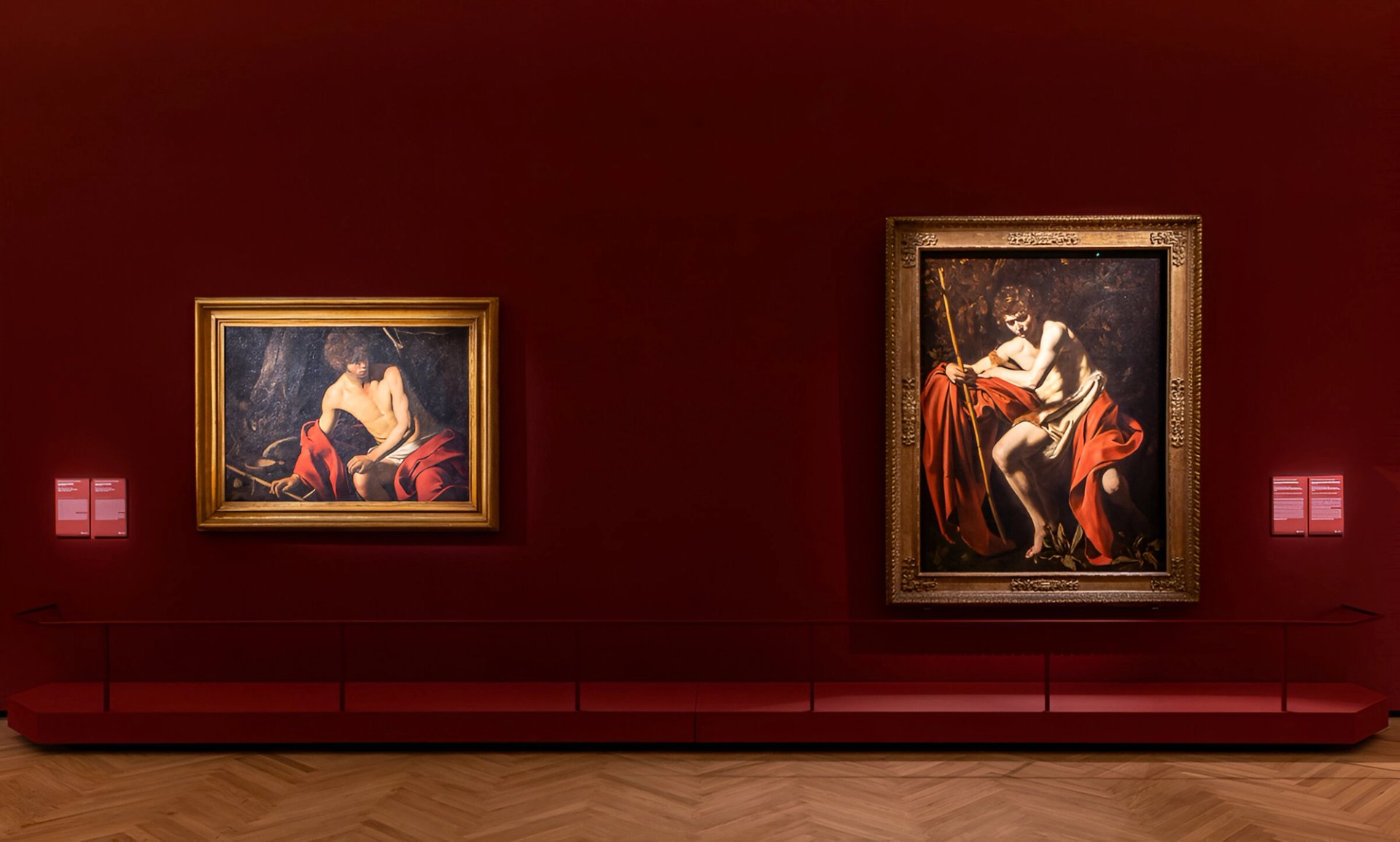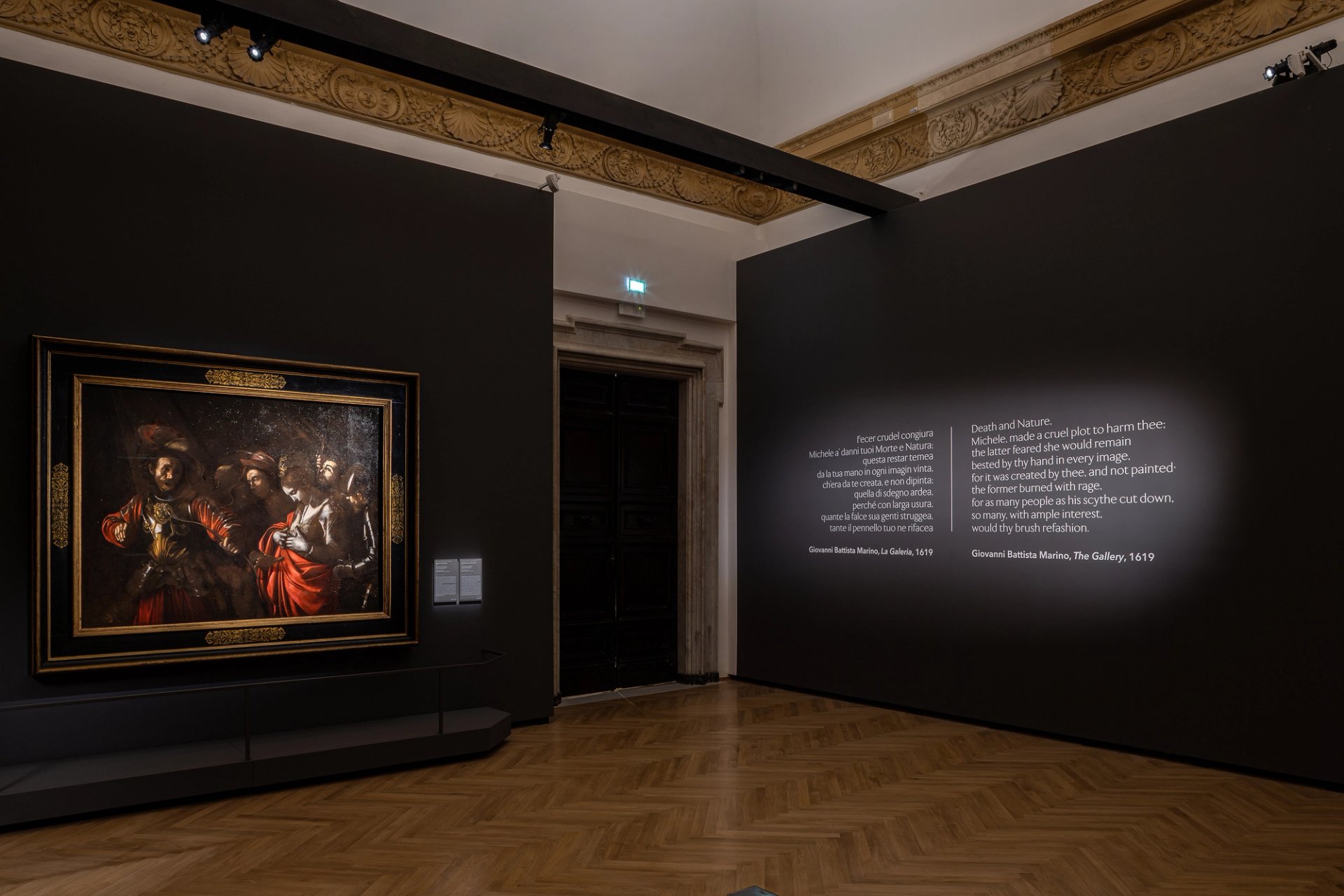The Big Review | Caravaggio 2025 at Palazzo Barberini, Rome ★★★
Total star rating: ★★★★
The works: ★★★★
The show: ★★
Two Old Masters are renowned today, not because of their traditional appreciation over the centuries, but because they were rescued from oblivion by pioneering art historians. Just as Bernard Berenson ‘created’ Lorenzo Lotto, Roberto Longhi can be said to have ‘discovered’ the revolutionary contributions of Michelangelo Merisi da Caravaggio (1571-1610). These connoisseur-scholars researched their artists’ biographies as historians while equally tracing their stylistic qualities as art critics.
By now, Caravaggio’s biography and towering artistic reputation have been firmly established. Exhibitions devoted to the Baroque master can hardly fail, since any gathering of his autograph works will guarantee a beautiful experience. Perhaps that is the simple explanation for why so many of these shows are organised; fresh scholarship is almost beside the point. Visitors are attracted by the dramatic life as much as by the ingenious talent of a figure who has inspired numerous films and novels—a gay icon of 17th-century Rome and a villain, who did not refrain from killing when enraged.
The Caravaggio 2025 exhibition at the Gallerie Nazionali di Arte Antica is accompanied by an aggressive marketing campaign and a populist press release of densely woven superlatives that could easily frighten off a reviewer. We are promised “one of the most important, ambitious exhibition projects” ever dedicated to the artist, offering a “unique opportunity to rediscover Caravaggio’s art in a new light, with an itinerary integrating discoveries, critical reflection and the close comparison of his masterpieces”.
Any gathering of his autograph works guarantees a beautiful experience
It is an undeniable achievement to have assembled 24 paintings by Caravaggio from around the world (about the same number as are permanently located in Rome), even if a few might be disputed. The high level of the enterprise is assured by the reputation of the show’s three co-curators, Francesca Cappelletti, Maria Cristina Terzaghi and Thomas Clement Salomon, who are currently among the most distinguished specialists of the artist’s work.
Yet the title Caravaggio 2025 leaves the scope of the show a mystery. Is this just a box-office attraction capitalising on the Catholic Church’s Jubilee year? But why then celebrate Caravaggio, a most profane religious painter? Is he being granted an indulgence?
Clipped canon
Press materials claim that the curators are exploring “Merisi’s entire artistic trajectory” through their selection of “an exceptional number of autograph paintings”, as if it were possible to establish which works are definitively by Caravaggio. Four incompatible mottos lead the visitor through the four rooms of the exhibition, from the historical “Making a name in Rome” to the technical “Invigorating the dark shades”, the iconographic “The sacred and the tragic between Rome and Naples”, and the final section, “Endgame”, evoking Samuel Beckett’s absurdist play.
Caravaggio’s The Musicians, one of a trio of works from the collection of the artist’s first major patron, Cardinal Francesco Maria del Monte © The Metropolitan Museum of Art/Art Resource/Scala, Florence
The show opens with the disputed Narcissus from the museum’s own collection, manifesting that visual evidence of Caravaggio’s early creations is still lacking. Three cheeky paintings from the collection of Cardinal Francesco Maria del Monte—The Cardsharps, The Fortune Teller and The Musicians, with a Cupid in the background—are reunited, granting the artist’s first major patron an ample role.
On entering the second room, one is received by the spectacular portrait of Maffeo Barberini, later Pope Urban VIII. Although it was identified as a Caravaggio by Longhi in 1963, the painting has only recently been exhibited in public. Its juxtaposition with a contemporaneous picture of the same sitter makes it easy for viewers to determine which Caravaggio attribution is tenable and which is not.
The entire large room is otherwise dedicated to three pictures, each on a wall of its own: Martha and Mary Magdalene, Judith Beheading Holofernes and Saint Catherine of Alexandria. The artist has the same model perform three totally different characters, and he directs her with a sublime virtuosity as the sensual Mary, the brutal Judith and the sensitive Catherine in her sumptuous princely robe. Elegantly draped against a shattered breaking-wheel with sharp spikes, Catherine gently caresses the second instrument of her martyrdom, a rapier, as if she were playing a cello.

Left to right: Caravaggio’s Saint John the Baptist from the Gallerie Nazionali di Arte Antica and Saint John the Baptist in the Wilderness from the Nelson-Atkins Museum of Art Photo © Alberto Novelli and Alessio Panunzi, courtesy Gallerie Nazionali Arte Antica
In the next room, the brushstrokes of Saint John the Baptist in the Wilderness from the Nelson-Atkins Museum, one of the artist’s most frequent subjects, reveal the excitement to be gained from contemplating the pristine surface of an original Caravaggio. The room presents two more recent additions to the painter’s oeuvre: The Taking of Christ, a masterpiece of chiaroscuro from Dublin, and the Ecce Homo from Madrid, with a prominent bearded figure who has a more Flemish appearance than might be expected of a Roman governor like Pontius Pilate.
Let-down
The Martyrdom of Saint Ursula is, however, a great disappointment as the culminating picture of the show, in spite of its renewed restoration. Attuning this black picture—to which the harsh white scrubbings pretend to apply some modelling—to the anthracite final room does not make it any less of an alien among the artist’s works. There is overwhelming documentary evidence to support the attribution to Caravaggio, even if it does not prove that The Martyrdom of Saint Ursula was his final work. Documents also testify to the painting’s compromised technical condition from the very beginning.

Although Caravaggio’s The Martyrdom of Saint Ursula recently underwent restoration, the painting’s technical condition was compromised from the very beginning Photo © Alberto Novelli and Alessio Panunzi, courtesy Gallerie Nazionali Arte Antica
Restoration is not magic that can bring back lost layers of pigment and the handling of paint, which are gone forever. There is special providence in each overpainting, and removing one is not always a revelation. A conservator should contemplate whether it was applied by a predecessor or a correction by the artist himself, as was concluded in the previous restoration of The Martyrdom of Saint Ursula in 2004. The painting is now a ruin—in Monty Python’s terms, an “ex-Caravaggio”—and no amount of technical progress can change this. Its dire condition should be communicated to visitors.
By comparison, the Portrait of a Maltese Knight on the wall opposite is a delightful demonstration of Caravaggio’s virtuosity, not only in what he can do with white, but with a conscious reduction of colours.
While there are extremely engaging paintings present in the exhibition, the grand claims for “a new, in-depth reflectionon the artistic and cultural revolution sparked by this Lombardy master” and an exploration of “his deep influence on the art of his time and of the future as well as on the contemporary collective imagination” are unfortunately never fulfilled. How can a visitor perceive this, when no work illustrates either contemporary tendencies nor Caravaggio’s legacies?
What the other critics said
Rachel Campbell-Johnston, writing in The Times, gives the show five stars and says that it is “certainly a contender” as “the greatest Caravaggio show in history”. In the Wall Street Journal, A.J. Goldman calls it an “astounding survey”. However, Federico Giannini, writing in Finestre sull’Arte, says it is “a pity that the exhibition, despite having a lot of recent material … and despite presenting itself as ‘a unique opportunity…’, ends up being at least lukewarm in terms of scientific innovations, which do not seem to be at the centre of the exhibition”.
• Caravaggio 2025, Gallerie Nazionali di Arte Antica, Palazzo Barberini, Rome, until 6 July
• Curators: Francesca Cappelletti, Maria Cristina Terzaghi and Thomas Clement Salomon
• Tickets: €18 (concessions available)




